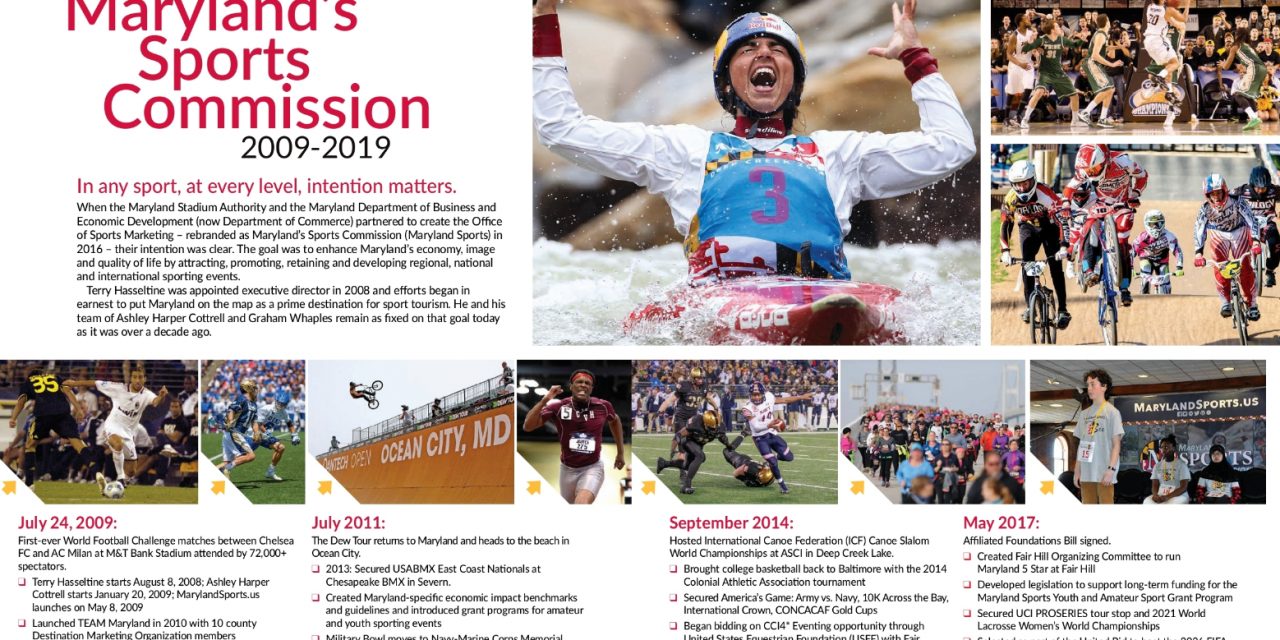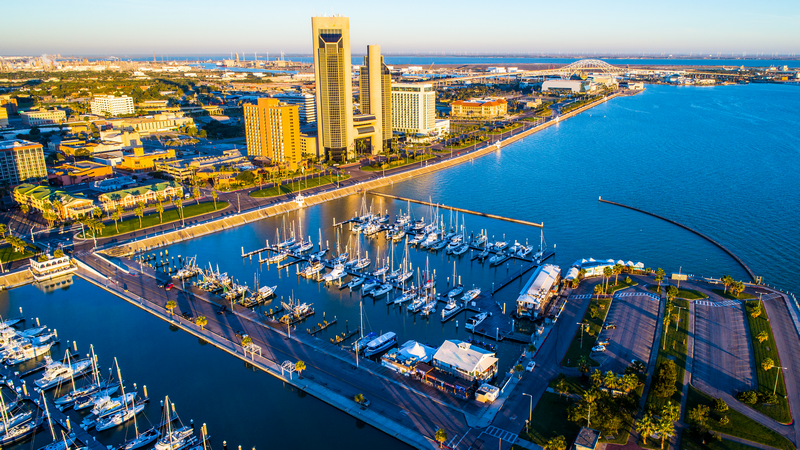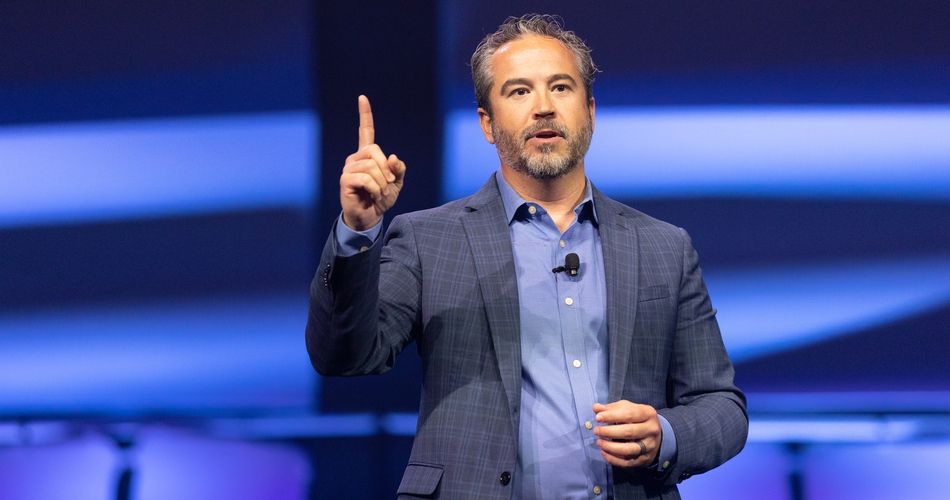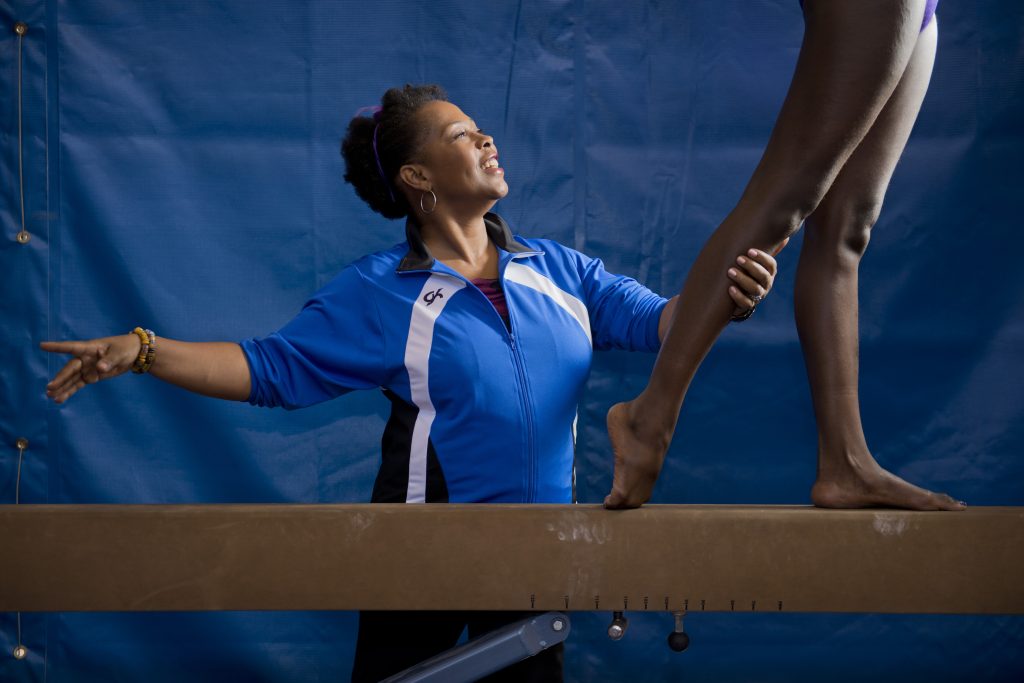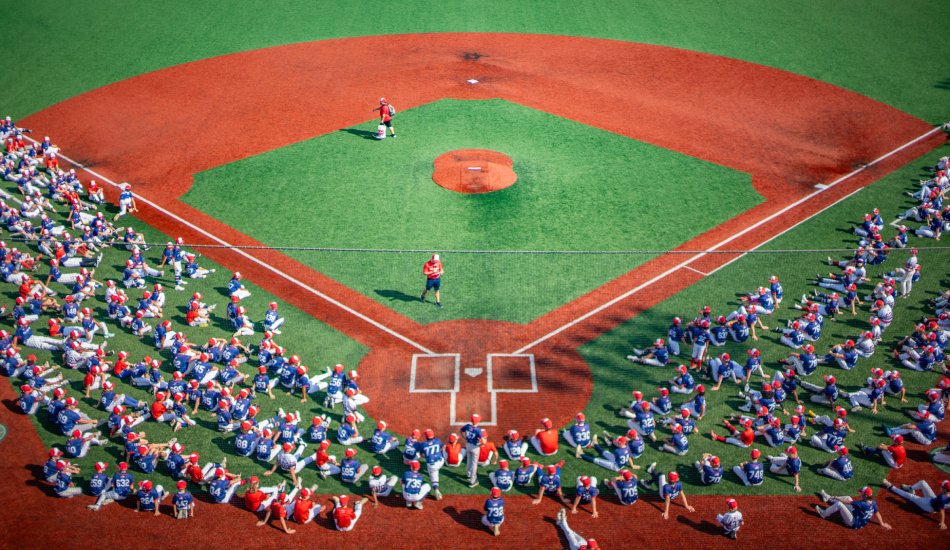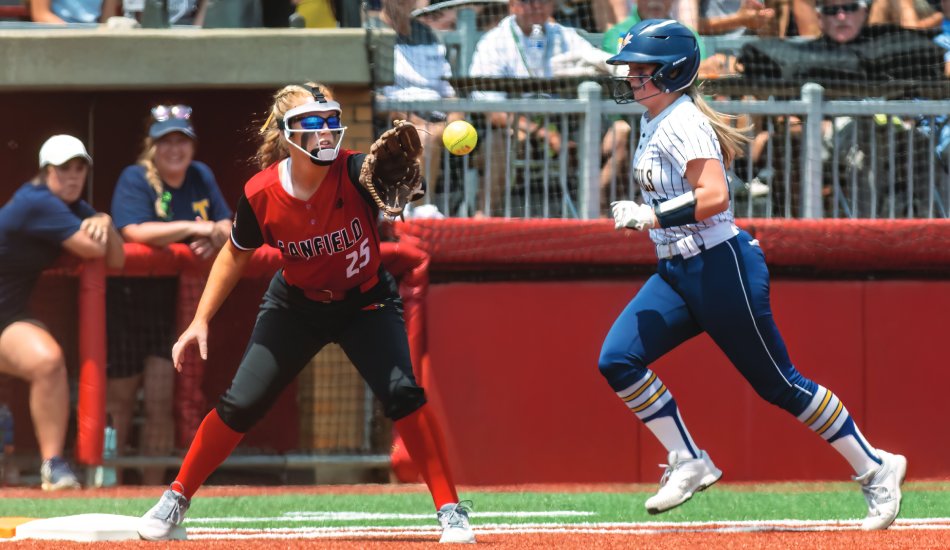Veteran sports tourism executive guides statewide efforts through uncharted waters
Terry Hasseltine, executive director of the Maryland Sports Commission, has been forging ahead for the future of sports in Maryland. The organization just released its 10th anniversary publication online about the impact sports has had on the state of Maryland and the industry over its first 10 years of operations. Beyond that, the commission is busy behind the scenes to make sure that as the industry recovers, Maryland partners are ready.
SPG: Can you give us an analysis of event cancellations versus postponements in Maryland?
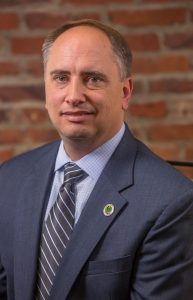
Terry Hasseltine
Terry: We’ve obviously had significant cancellations because our events are scheduled during specific time periods and seasonality of the sports. A lot of folks are trying to adjust and move things into the future. We’re currently working with our TEAM Maryland partners and our Maryland’s Own partners about how we can get some of the events back on the books in the future.
It’s not as easy as just saying, “You were going to be in May and now it’s going to be October.”
This is because of the seasonality of certain sports, plus some of these venues have other events that are already occupying the space. So we’re working through a lot of the due diligence, working with our event owners, working with our national governing bodies and our international federations on what their calendars look like. We’re following the calendar to see where we might be impacted.
SPG: How does this affect or influence any new initiatives?
TH: We just launched a non-profit last June, the Sport & Entertainment Corporation of Maryland which was just starting to get its feet under it, with events like the Maryland 5 Star at Fair Hill, the Maryland Cycling Classic and our 2026 World Cup effort, then all of a sudden we get hit with the pandemic.
Cash flow was just starting to come into the positive realm, but now sponsors are holding back because they don’t know what the future holds. It’s not the best year to be starting a new non-profit organization [chuckling]. Much like every other small business non-profit, we’re applying for grants, loans and the payroll protection program.
We’re doing all of those things, but as you’re witnessing, not a lot of funds are being seen yet nor communication about when you can expect responses. They’re waiting on federal funds to come in and in certain cases some organizations are waiting for state funds to come in. So, there’s this cat and mouse game of “We can’t make a promise on your commitment for payroll on this until we get the federal money or state money.” There’s so much information out there now, people find it hard to just keep up with all the information because it changes daily, and the SBA has changed some application processes.
SPG: A little perspective on the SBA. Last year they wrote a total of $28 billion in loans and they’re now being asked to process $250 billion in a matter of weeks. Everyone has to be patient in dealing with the stress of what to do with personnel and how they best keep people on.
TH: So many of those organizations are financially bound to their events. When you have no event, their backup is usually their insurance plan, then they find out insurance doesn’t cover things like pandemic. They don’t even have that cushion to lean on in these times and so a lot of people are hurting.
My whole directive to everybody is stay optimistic, stay positive, we’re going to find a strategy to come out of this thing and when we do we’re going to be stronger. We’re going to be more resilient, and we’re going to get back at it. We just need to be patient right now and let time heal this process and we’ll get back at it. But the problem is, as we know, time is not always on everybody’s side. Cash flow dries up and you don’t have that backing or the loan program or grant program and you have to make really tough decisions. A lot of people are making really tough decisions right now between furloughing and laying off people.
I’m trying day-in-day-out to find vehicles to help all those small businesses find avenues to get something in the door so they can keep their people together. My biggest concern is if they let all their people go, when we do get the green light, if they have to reset the entire equation we’re not going to get events off nor be able to hit the ground at minimum level.
SPG: Let’s talk about that recovery process. Are you envisioning that local and regional events will come back pretty strong once we get a sense that there are no more safety concerns?
TH: Regional events will be the first things in the queue to get back on track, though the numbers will not be what we’ve seen in past years. I think people will potentially feel okay about getting in their cars and driving certain distances to allow their kids to participate in tournaments and the like, but I also think there’s going to be a big fear factor. Is it safe for them to be playing out there? Is it safe for them to be in a huddle? Is it safe for them to be bumping up against another kid during competition?
As a result, you’re going to see some drops in numbers for a period of time, but I think over the course of the next three years, you’ll see those regional events and those regional tournaments come back to some level of close to normal.
SPG: And the national and international events are going to be a slower drag?
TH:In terms of people jumping on airplanes and crossing the country or crossing the ocean, I think that’s going to take a little bit more time to come online, especially since there will be some international travel restrictions. Looking at European travel markets like Spain, France, and Italy and other countries, will there be that sense of comfort to put their bike on a plane or transport their horse across the ocean to compete in a competition? We will have to rely on a much heavier domestic participation. In reality, it could be potential years two before the international teams feel comfortable again.
SPG: Even in the darkest of times there’s a ray of hope. What do you see?
TH:It’s been said a thousand times, these are unprecedented times and we’re all trying to figure it out. If there is a silver lining in all of this, it’s that some people who never used to talk are starting to talk to one another. You’re seeing it on the professional level where leagues are starting to communicate outside their silos because they want to be unified in how they come back online. The NBA is doing one thing and the NFL is doing another. This is happening all the way down to youth sports tournaments. I think that potentially might be the silver lining in the net positive for the future of sports.
SPG: Looking at our industry’s trade shows, especially for this year, there are events scheduled for the later part of the summer. Do those come together? What sort of participation level are we looking at?
TH:It goes back to the discussion we were having on the pro teams talking. Trade shows are starting to collaborate to possibly what might be the new normal. Is it two conferences a year – one in the spring and one in the fall – and do we blend a matrix of who gets the title umbrella, where each of the organizations provides content and/or activity that is connected to our industry? I believe we have to unify so that professionals get the education they need, the sales connections and networking connections they need. We have to minimize the amount of travel we have to do in a given year so we can get the biggest impact at maybe one or two conferences versus having to go to seven, eight or nine. I think the next six months will be critical to how the future of the conference business for sports tourism lines up.
SPG: Are there any events in particular that you’re looking forward to watching or participating in as we get back to normal? What do you want to be part of as we get back to normal life again in America?
TH: That’s a big question that I can answer in more than a thousand and one ways. From a personal perspective, anybody who knows me knows that I’m a huge Notre Dame football fan. I love watching my Golden Domers, so I look forward to that. I am planning on taking my daughter to her first Notre Dame game.
From a business side, I’m hoping that we’re able to get the cycling event off the ground and start it this year. I hope the Maryland 5 Star gets a chance to showcase that new facility that was built here in Maryland. At the end of the day, I really hope that our Maryland partners and event owners that call Maryland home are able to put the flag back in the ground and start getting back to supporting our youth. These events are such a fabric of our landscape, they are the things that can change the culture of community.

